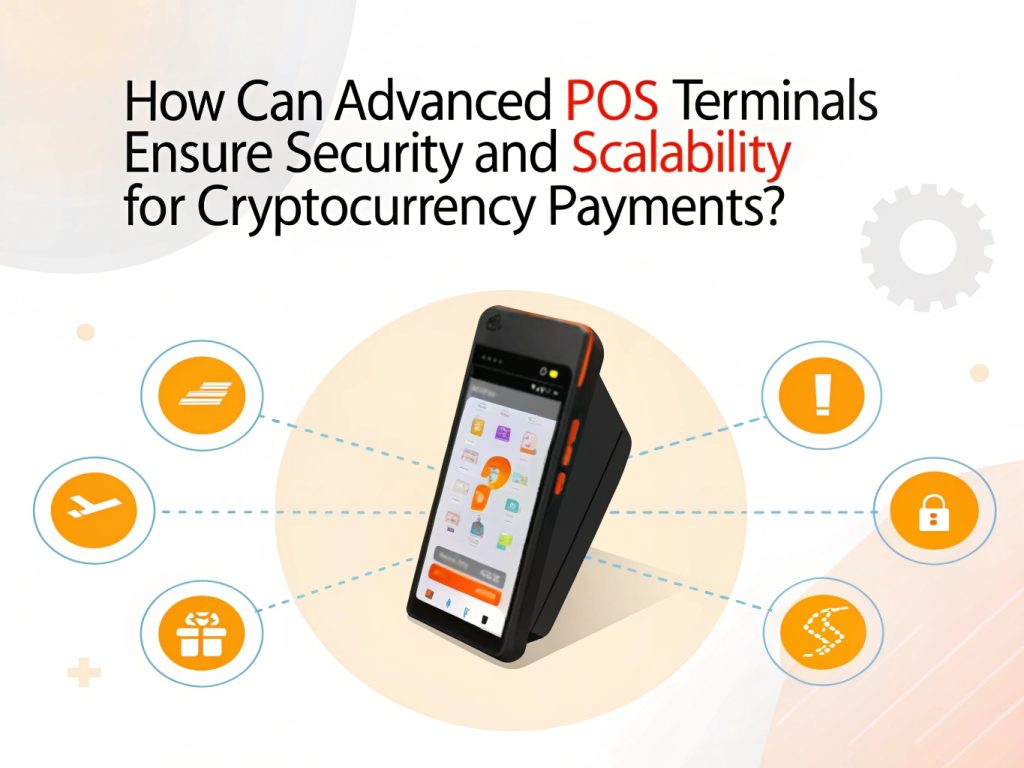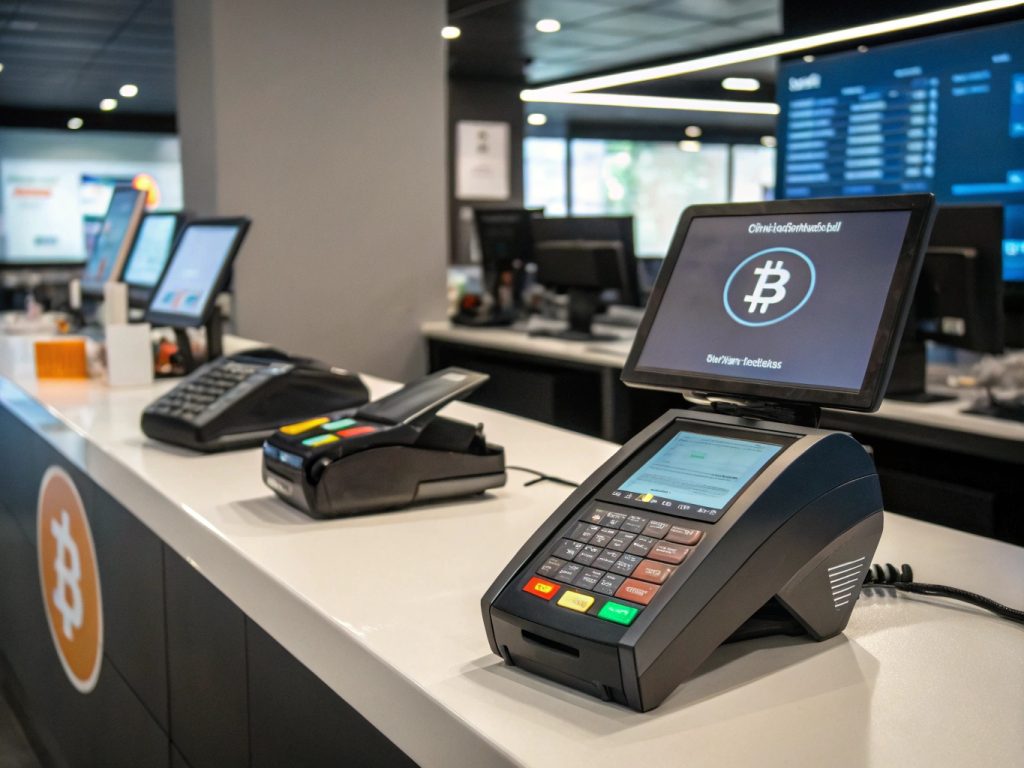
As cryptocurrency payments grow in popularity, merchants face the challenge of handling high transaction volumes while ensuring top-notch security. But how can advanced POS terminals meet these needs? Let’s explore this further.
Advanced POS terminals, such as those running on Android 13, provide secure encryption and multi-factor authentication while supporting high-volume cryptocurrency transactions, ensuring both scalability and security.
The world of cryptocurrency is changing fast, and POS systems need to keep up. Let’s dive deeper into how these systems can both protect payments and scale with growing demand.
- What is Scalability in Crypto Payments?
- How Does PoS (Proof of Stake) Work in Cryptocurrency Payments?
- Which Unique PoS Cryptocurrency Enhances Blockchain Interoperability?
- Scalability Challenges in Blockchain Payment Systems: Overcoming Limitations
- How Can Blockchain POS Systems Improve Payment Security?
- How Does SDK Integration Support POS System Scalability?
What is Scalability in Crypto Payments?
Scalability in crypto payments means that as transaction volumes increase, the system can handle it without slowing down. But what does this mean for a POS terminal?
Scalability in crypto payments ensures that POS terminals can process increasing transaction volumes without affecting speed or security, allowing businesses to grow smoothly.
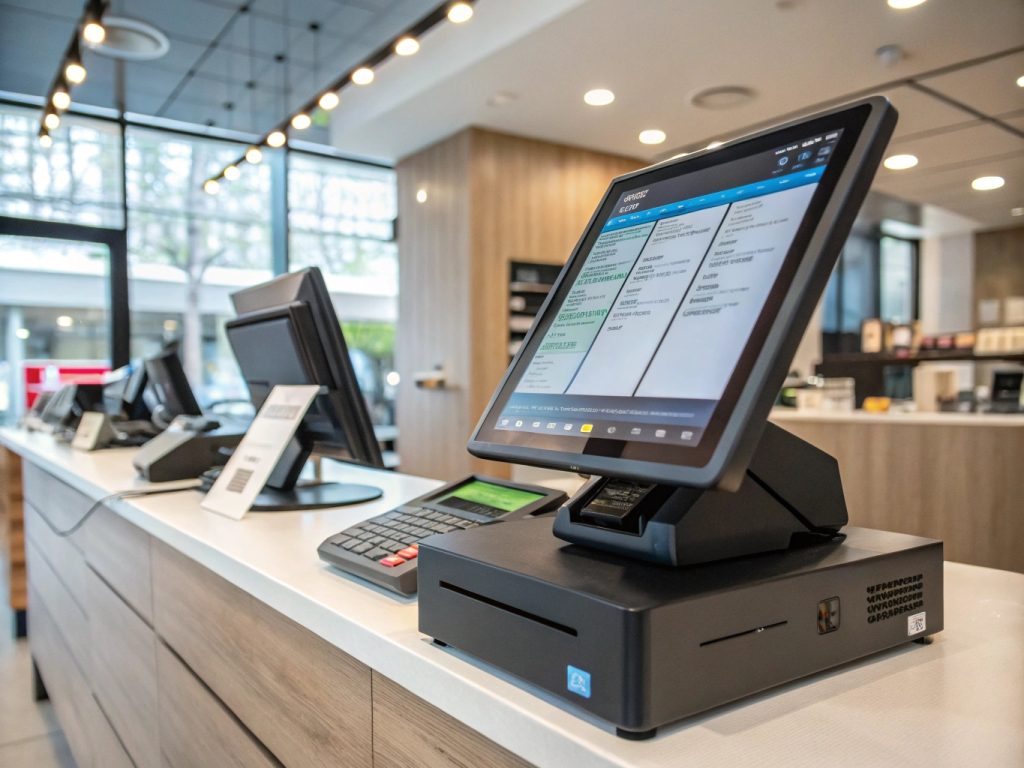
When I started working with cryptocurrency, scalability was a huge concern. In the beginning, I saw many POS systems struggle to handle a higher number of transactions. As cryptocurrencies gained popularity, the need for scalable systems became clear. Advanced POS terminals are designed to address this challenge by supporting fast transaction speeds and minimizing costs, even as the number of transactions grows.
With the rise of decentralized finance (DeFi), scalability isn’t just about handling more payments—it’s about managing various blockchains efficiently. For merchants, this means that POS systems must be flexible enough to support multiple currencies and blockchain networks, ensuring that no matter how many customers choose to pay in crypto, the system can handle it all.
How Does PoS (Proof of Stake) Work in Cryptocurrency Payments?
Proof of Stake (PoS) is a method used to validate cryptocurrency transactions without the need for energy-intensive mining. But how does this process impact POS systems?
PoS improves the speed and security of crypto transactions by selecting validators based on their stake in the network, reducing the complexity and energy use compared to Proof of Work.
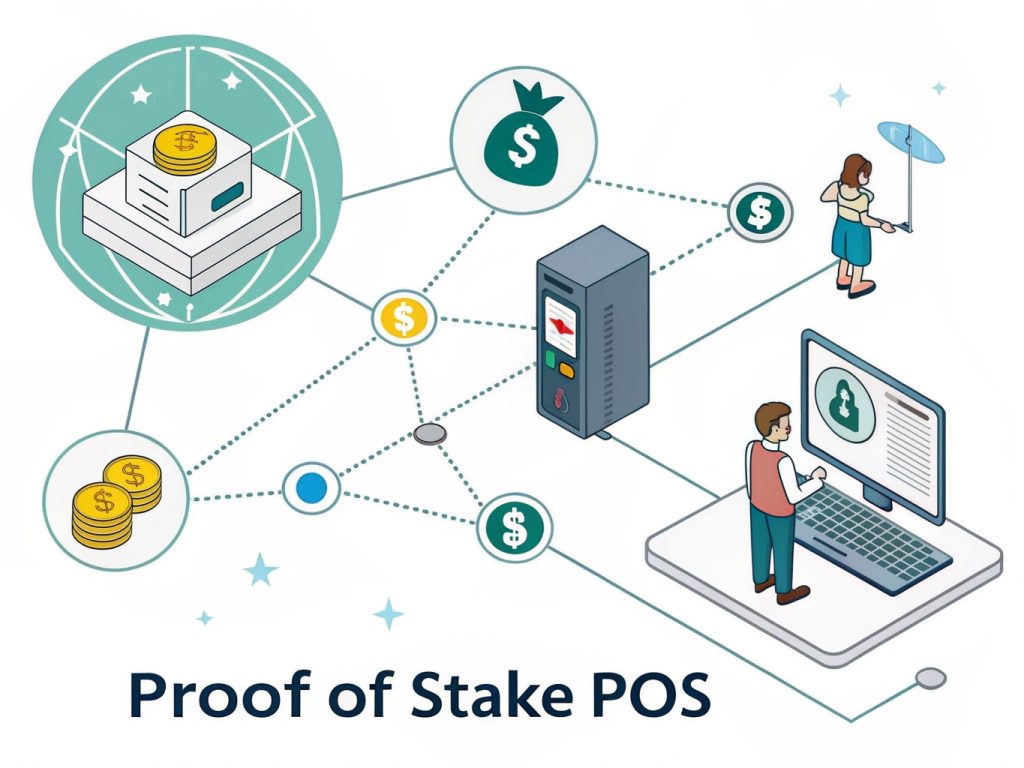
When I first encountered Proof of Stake, I was fascinated by how it could simplify transaction validation. Unlike Proof of Work, which requires miners to solve complex puzzles, PoS lets validators confirm transactions based on how much cryptocurrency they hold and are willing to lock in as collateral. This method is faster and more energy-efficient, making it a perfect fit for high-volume POS terminals.
In a practical sense, this means that POS systems integrated with PoS blockchains can process transactions more quickly, helping merchants provide a better experience for customers. For large merchants, this efficiency is essential—especially as they begin to accept more cryptocurrencies and handle larger transaction volumes. The system can remain secure without getting bogged down by complex mining processes.
Which Unique PoS Cryptocurrency Enhances Blockchain Interoperability?
As businesses adopt multiple cryptocurrencies, the ability to connect different blockchains becomes crucial. What role does interoperability play in improving POS systems?
Polkadot (DOT) enhances blockchain interoperability by enabling different networks to communicate, making it easier for POS systems to handle various cryptocurrencies on the same platform.
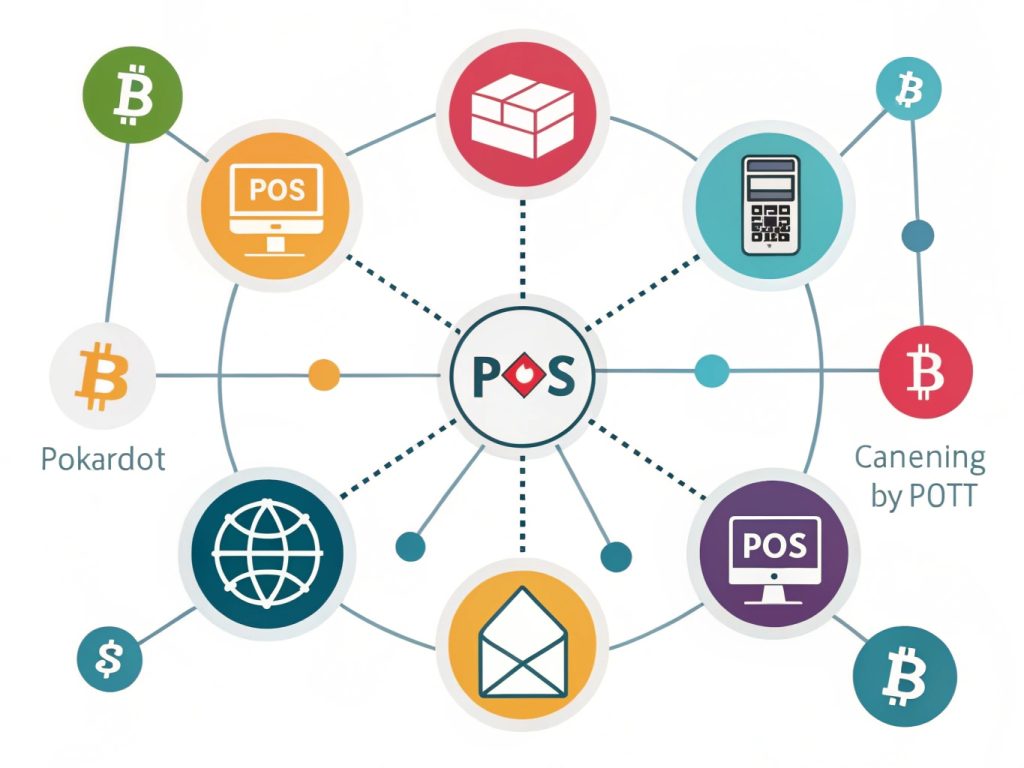
Polkadot was a game-changer when I first explored it. Its design allows separate blockchains to work together, creating a network of interconnected systems. For merchants, this is a game-changer because it means that POS terminals can accept a wider variety of cryptocurrencies without needing to integrate each blockchain individually. Polkadot simplifies this by offering a unified framework where different chains can interact, streamlining crypto payments for businesses.
For example, let’s say a business accepts Bitcoin, Ethereum, and Polkadot. Without Polkadot’s interoperability, each blockchain would need its own integration. But with Polkadot, it becomes much easier to manage multiple currencies through a single POS system, allowing businesses to scale faster and more efficiently.
Scalability Challenges in Blockchain Payment Systems: Overcoming Limitations
While blockchain technology offers tremendous advantages, scalability remains one of its biggest hurdles. How do POS systems overcome these challenges?
Scalability challenges in blockchain are managed by optimizing transaction speeds, improving consensus algorithms, and using Layer 2 solutions to avoid bottlenecks and delays.
One of the first things I noticed when working with blockchain payments was the issue of scalability. Initially, systems had trouble handling large numbers of transactions because of limited block sizes or slow validation times. But over time, solutions like Layer 2 networks (such as the Lightning Network for Bitcoin) and more efficient consensus mechanisms have emerged to solve these problems.
For merchants, these solutions are a lifesaver. By using a POS system that supports these technologies, businesses can avoid transaction bottlenecks, lower fees, and speed up processing times—critical for high-volume payments. Scalability is no longer a distant goal but a reality for businesses that want to stay competitive in the growing crypto space.
How Can Blockchain POS Systems Improve Payment Security?
Security is always a concern when dealing with digital payments, especially in the crypto space. How can POS systems enhance the security of cryptocurrency transactions?
Blockchain POS systems enhance payment security by using encryption and multi-factor authentication to protect sensitive data and prevent unauthorized access.
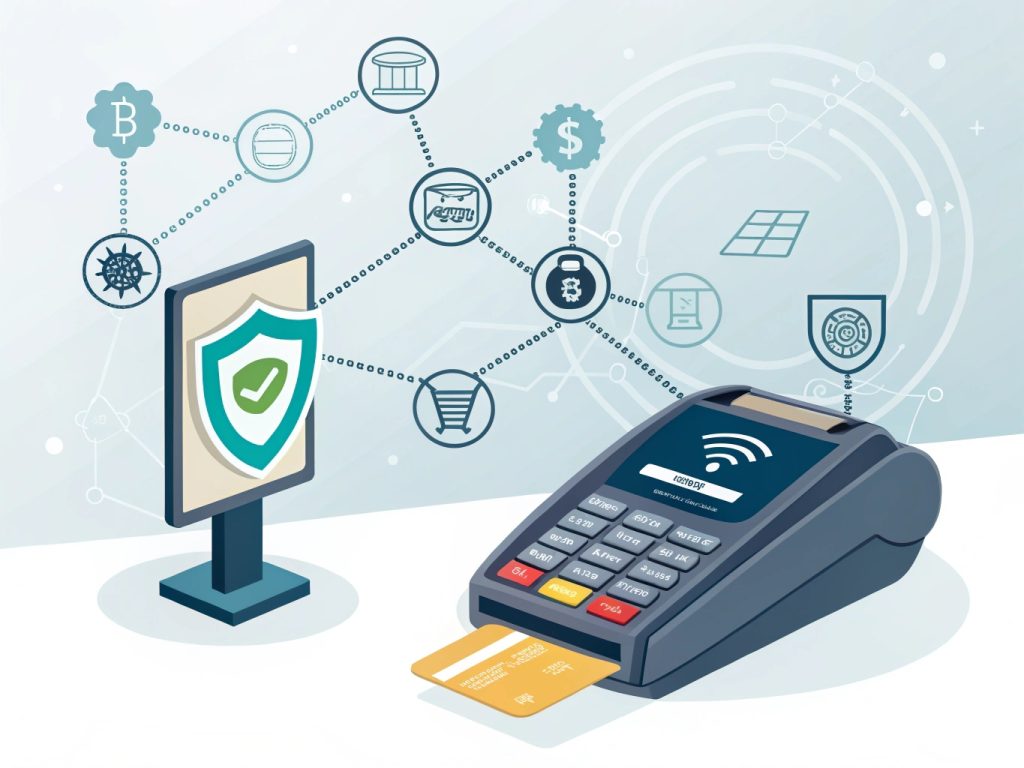
Dive Deeper:
When I first started working with blockchain-based payments, I was immediately impressed by the level of security they offered. Blockchain itself is secure by design—each transaction is cryptographically sealed and stored in blocks that are nearly impossible to tamper with. But when it comes to POS systems, additional measures like encryption and multi-factor authentication (MFA) are essential for securing transactions.
Encryption ensures that data is protected during transmission, while MFA adds another layer of security by requiring multiple forms of verification before a transaction can be completed. This combination of blockchain security and enhanced POS system features makes crypto payments safer than traditional methods, helping merchants protect both their business and their customers from fraud.
How Does SDK Integration Support POS System Scalability?
As the crypto payment landscape grows, POS systems must be able to adapt to new cryptocurrencies and technologies. How do SDKs help ensure scalability?
SDKs help developers extend POS system functionality by allowing easy integration of new features and cryptocurrencies, supporting growth without compromising system stability.
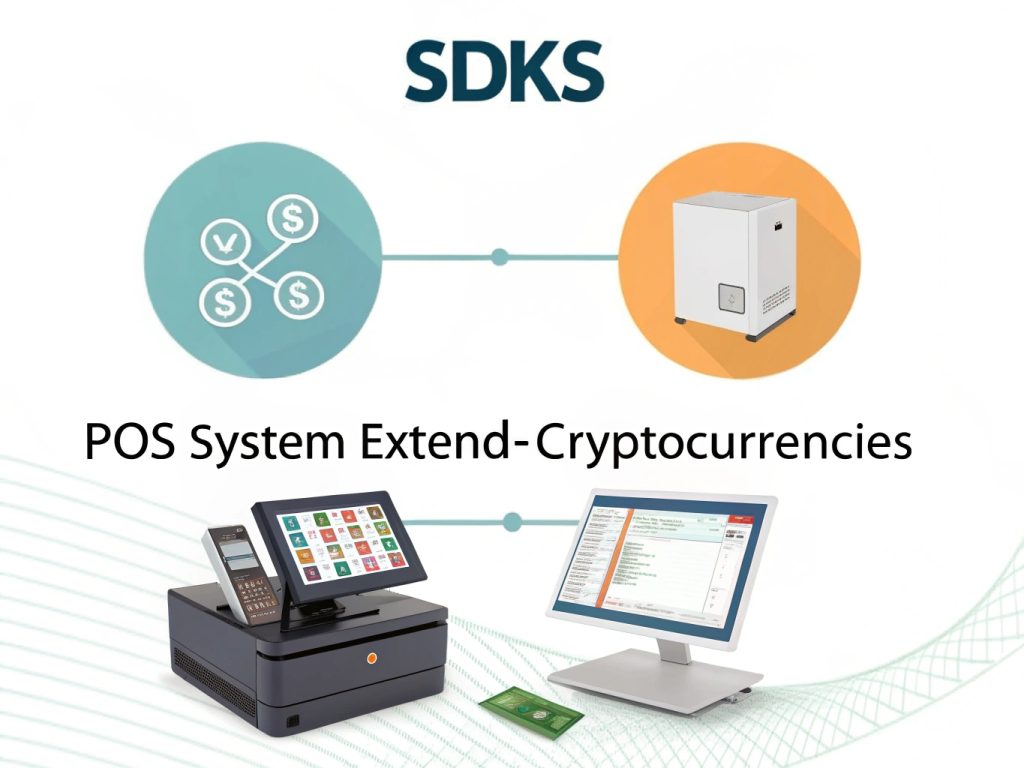
When I was first learning about SDKs, I realized how they could be the key to expanding POS system capabilities. Software Development Kits (SDKs) allow developers to build custom solutions that integrate new payment features, such as support for additional cryptocurrencies or advanced security protocols, into existing POS systems. This ability to quickly adapt to changing market demands ensures that POS systems can scale without major overhauls or instability.
By leveraging SDKs, businesses can keep up with new trends in crypto payments and maintain a flexible, future-proof system as they grow. Whether it’s adding new blockchain networks or improving security features, SDKs make scaling easier and more manageable.
Conclusion
As the demand for cryptocurrency payments continues to rise, advanced POS terminals equipped with encryption, PoS integration, and SDK adaptability ensure security and scalability for businesses looking to thrive in the digital economy.

